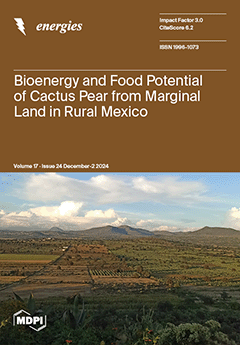This paper examines Connected Smart Green Buildings (CSGBs) in Burnaby, BC, Canada, with a focus on townhouses with one to four bedrooms. The proposed model integrates sustainable materials and smart components such as recycled insulation, Photovoltaic (PV) solar panels, smart meters, and high-efficiency
[...] Read more.
This paper examines Connected Smart Green Buildings (CSGBs) in Burnaby, BC, Canada, with a focus on townhouses with one to four bedrooms. The proposed model integrates sustainable materials and smart components such as recycled insulation, Photovoltaic (PV) solar panels, smart meters, and high-efficiency systems. These elements improve energy efficiency and promote sustainability. Operating in island mode, CSGBs can function independently of the grid, providing resilience during power outages and reducing reliance on external energy sources. Real data on electricity, gas, and water consumption are used to optimize load management under isolated conditions. Electric Vehicles (EVs) are also considered in the system. They serve as energy storage devices and, through Vehicle-to-Grid (V2G) technology, can supply power when needed. A hybrid Machine Learning (ML) model combining Long Short-Term Memory (LSTM) and a Convolutional Neural Network (CNN) is proposed to improve the performance. The metrics considered include accuracy, efficiency, emissions, and cost. The performance was compared with several well-known models including Linear Regression (LR), CNN, LSTM, Random Forest (RF), Gradient Boosting (GB), and hybrid LSTM–CNN, and the results show that the proposed model provides the best results. For a four-bedroom Connected Smart Green Townhouse (CSGT), the Mean Absolute Percentage Error (MAPE) is 4.43%, the Root Mean Square Error (RMSE) is 3.49 kWh, the Mean Absolute Error (MAE) is 3.06 kWh, and
is 0.81. These results indicate that the proposed model provides robust load optimization, particularly in island mode, and highlight the potential of CSGBs for sustainable urban living.
Full article





